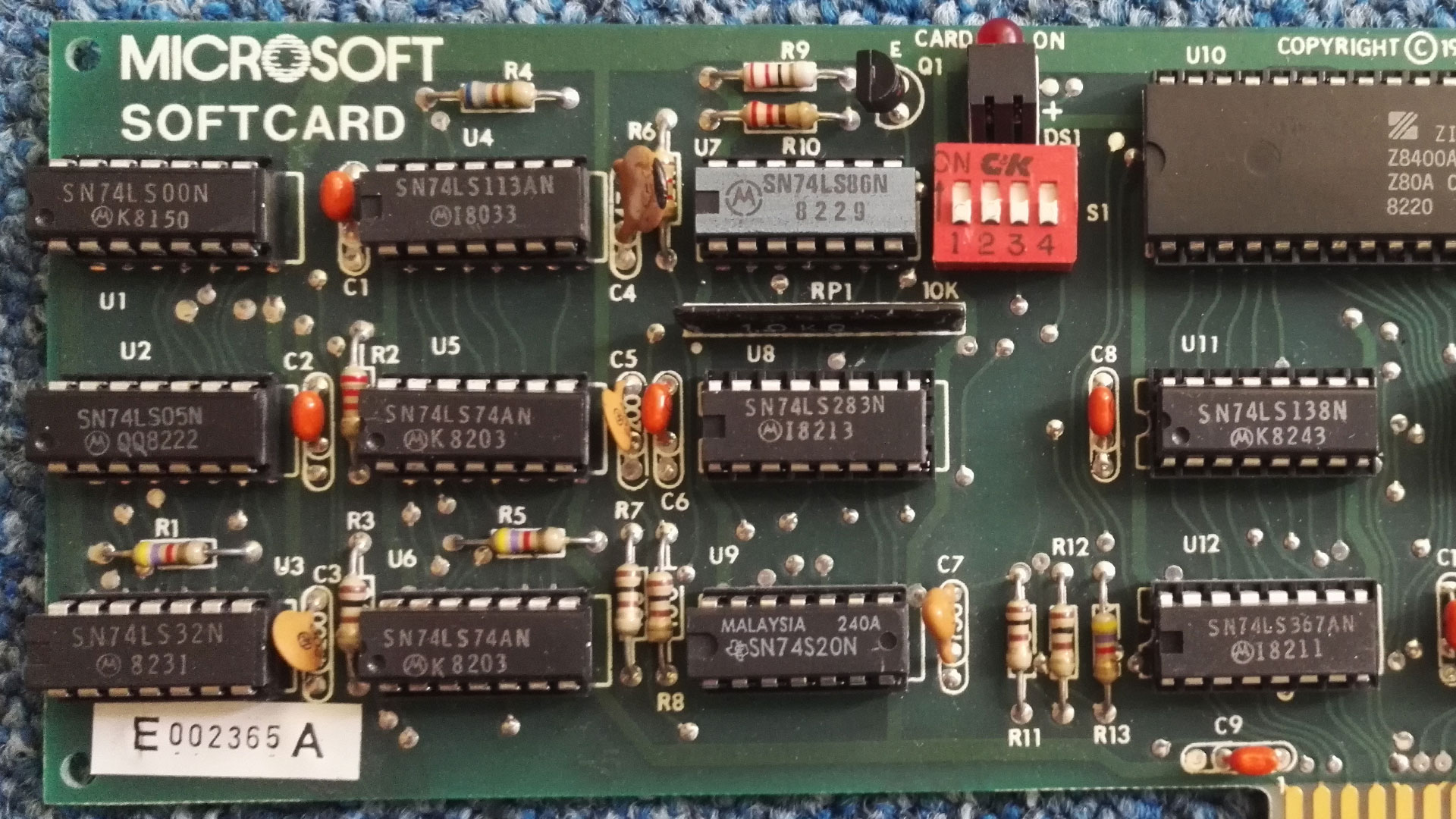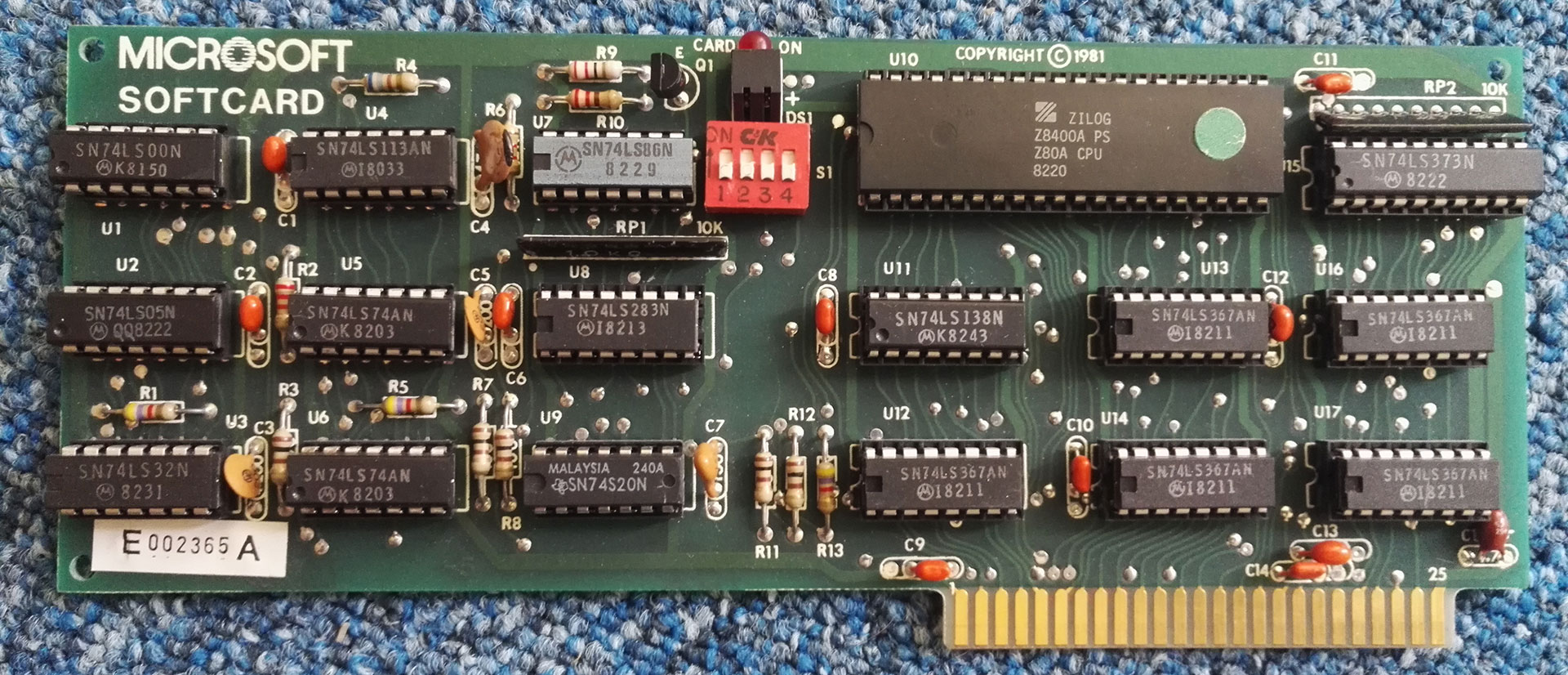Storied Windows dev reminisces about Microsoft's first hardware product 45 years ago — the Z-80 SoftCard was an Apple II add-in card
This Apple II add-in card which enabled CP/M software compatibility would cost $1,350 today, but was Microsoft's biggest moneymaker in 1980.

Storied Windows developer Raymond Chen has shared some insight only he could, into the development of Microsoft’s first hardware product, circa 1980. Around 45 years ago, Microsoft released its Z-80 SoftCard product for Apple II users. Its purpose was to give users of Apple's popular MOS Technology 6502-powered computer access to the CP/M software library, which was important during this era. However, to work its magic, Microsoft’s expansion card was fitted with a Zilog Z80, plus some tandem-processor coding gymnastics, as now revealed by Chen in his The Old New Thing blog.
What was the Z-80 SoftCard?
The Microsoft Z-80 SoftCard targeted Apple II users who wanted access to the Digital Research CP/M operating system's software library on their otherwise quite capable microcomputers. So, Microsoft’s first hardware product directly addressed this cross-compatibility desire/need. But it wasn’t as simple as slapping a CP/M compatible processor on an Apple II expansion card and saying, ‘You got it.’
Microsoft didn’t actually formally identify itself as a ‘software and devices’ firm until 2013, under the stewardship of current CEO Satya Nadella. So it is a little surprising to read about how big a success the Z-80 SoftCard was, as soon as it launched in 1980.
Contemporary reports on the success of this CP/M software enabler describe it as a breakthrough and suggest Microsoft was inundated with orders from launch. This hardware was actually Microsoft’s largest revenue maker in its launch year, with sales continuing for several years subsequently. Sold at $350 in 1980, we reckon that gives us an inflation-adjusted price of approximately $1,350 in 2025.
Chen’s insight into Microsoft’s first hardware product
Microsoft’s elite-tier Windows developer, Chen, explains that the Apple II-hosted Z-80 SoftCard required some special code wrangling to play nicely with the host’s 6502.
One of the biggest problems getting these two processors to play nicely with each other was due to the fact that the 6502 couldn’t simply be disabled while the (Intel 8080-compatible) Z80 worked its CP/M code magic. It was still required to handle I/O, timing, and more.
Chen says that various ‘tricks’ were used to get past hardware hurdles. The SoftCard employed a simulated DMA operation to pause the 6502 and monitored the Z80 refresh line when it wasn’t accessing memory, so the 6502 didn’t fall asleep or conflict with it. Thus, inter-processor communication planning was essential, as was being careful of potential memory mapping conflicts. In fact, memory remapping was such an essential part of SoftCard’s functionality that it was implemented in dedicated address-translation circuitry to prevent stack and buffer clashes between the architectures.
Get Tom's Hardware's best news and in-depth reviews, straight to your inbox.
Pondering over Microsoft’s early major success on the hardware side of computing, I thought it would be interesting to sketch out a timeline of its defining hardware projects.
Microsoft's major hardware launch timeline:
- 1980: Z-80 SoftCard
- 1983: Microsoft Mouse
- 1990s: Further Windows peripherals
- 2001: Xbox
- 2006: Zune
- 2010: Windows Mobile phones
- 2012: Surface
- 2016: HoloLens
Remember, Microsoft only officially became a ‘software and devices’ firm in 2013. It was already firmly in the console market by then, but the refocus seems to have helped propel the extensive line of Surface products we saw at that time.

Follow Tom's Hardware on Google News, or add us as a preferred source, to get our latest news, analysis, & reviews in your feeds.

Mark Tyson is a news editor at Tom's Hardware. He enjoys covering the full breadth of PC tech; from business and semiconductor design to products approaching the edge of reason.
-
Shiznizzle Say what you want about M$ software and practices. Their hardware is on some other level of quality indeed. Every single M$ hardware product ive ever owned has been exceptionally well made and its endurance needs to have it own category.Reply
From my Keyboard, a DIN9- PS/2, , the one and only one i, still, use as ive not been forced to upgrade it yet, to the Precision Pro USB joystick that lasted 12 years.
I used that joystick starting on the old MSN Gaming Zone to play Fighter Ace 1.5. I played that game till the day it died. Hours in the evenings. I used that stick through all version of MSCFS. I used it to play EAW and its mods. All of the Janes games at the time. USAF, WW2 Fighters, IAF, the F15.
The joystick did not break and it was not even of the hall sensor type but a potentio meter type. You buy one of them today and they wont even last you a year.
I am typing this on a keyboard where i spent entire months in real time pressing buttons in WoW during dungeons runs. I no longer play wow. I played on all sorts of private servers and had fleets of alts to support mains on each server. From start to max level. All on this keyboard. The thing has seen millions of keystrokes on the 1-4 buttons alone.
I resolved to buy another one when this one dies. They are going cheap.
The level of quality that M$ hardware has is insane. Its out of this world. The endurance and durability of their stuff is simply mind boggling. -
Aaron Priest I owned one of these Microsoft Cordless Phones back around 1998. It was a pretty decent hardware and worked well, though the software for fax and answering machine could get buggy until a reboot. It never got support for Windows NT or 2000 though, nor XP, and 2.4Ghz and spread spectrum and better cordless standards made it go obsolete too soon. The speech recognition and synthesis was actually very good for it's day.Reply
https://www.techeblog.com/microsoft-cordless-phone-system-1998-speech-recognition/
